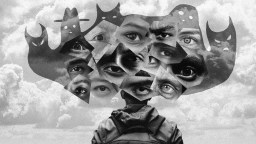Why “Great Replacement” theorists tried to cancel teddy bears
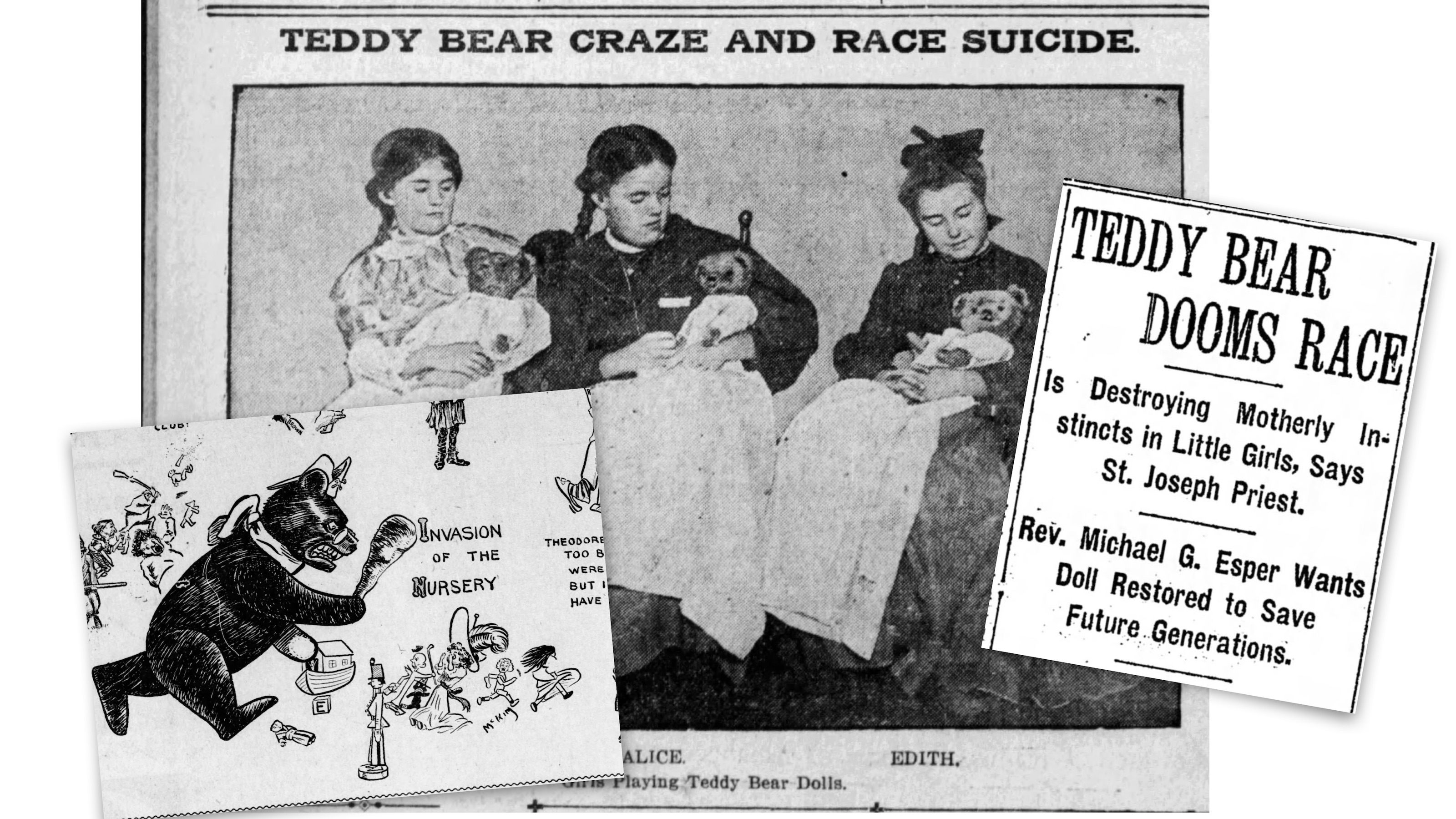
- “Teddy bears” were so-named because President Theodore Roosevelt refused to shoot an old bear tied to a tree. The toy was inspired by this act of grace and sportsmanship.
- Not everybody was enthused. One preacher argued that teddy bears were causing “race suicide” because they supposedly did not nurture maternal instincts in young girls.
- That innocent objects of childhood have been weaponized into Trojan horses to serve a perverse and corrupting agenda is a timeless populist narrative.
The Great Replacement theory — which is really a conspiracy theory — has made a comeback in recent times, forcing its way back into mainstream discourse. Once referred to as “white genocide” and before that as “race suicide,” the concept — born of the eugenics movement and fuelled by white supremacy — posits the white race (whatever that even means) is being displaced due to low birth rates and interracial couples having kids.
Why the concern? The underlying assumption, of course, is that there is something special about being white. Supremacists believe that the white race is superior to other races, and those who fall for the conspiracy theory believe that traditional culture and values are being erased.
Had the same conspiracy theorists been around in the first decade of the 1900s, they may well have been floating the great replacement theory in response to something as benign and unthreatening as teddy bears. A century ago, toy bears were accused of suppressing the maternal instincts in young girls — which toy dolls supposedly helped develop — and therefore would accelerate the “extinction” of “old stock” Americans.
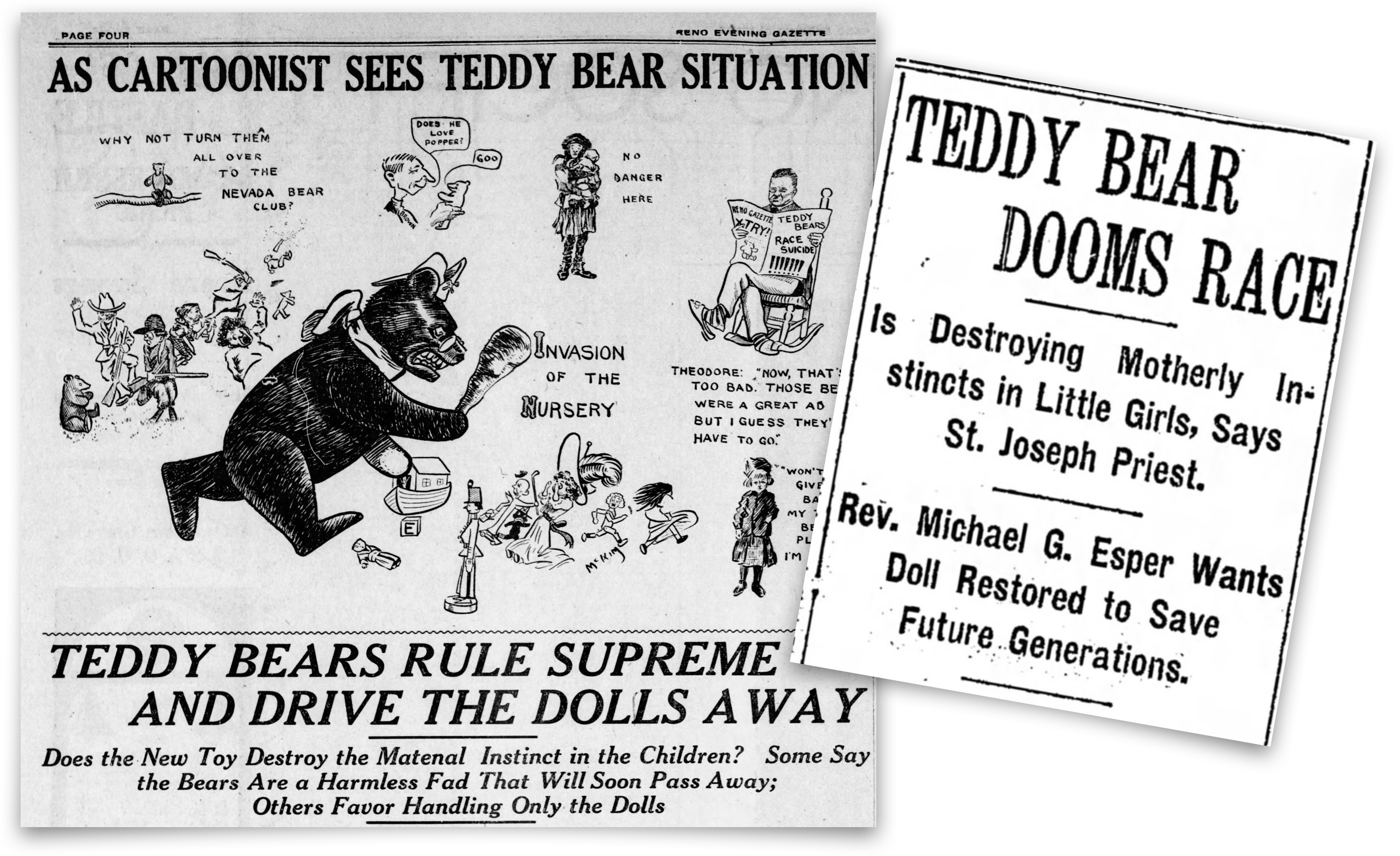
The origin of teddy bears
Toy teddy bears emerged in the first decade of the 1900s, growing rapidly in popularity following reports that President Theodore Roosevelt refused to shoot an old bear that had been tied to a tree. The anecdote, brought to life in a Washington Post cartoon, became an early presidential meme.
It is commonly believed this inspired a toy company (the Ideal Novelty and Toy Company) to produce “Teddy’s bears” after getting permission from the President himself. The cartoon associated Roosevelt and bears in the popular mind, and inspired a comic strip in the New York Times called “The Roosevelt Bears,” which was syndicated across the country for a number of years.
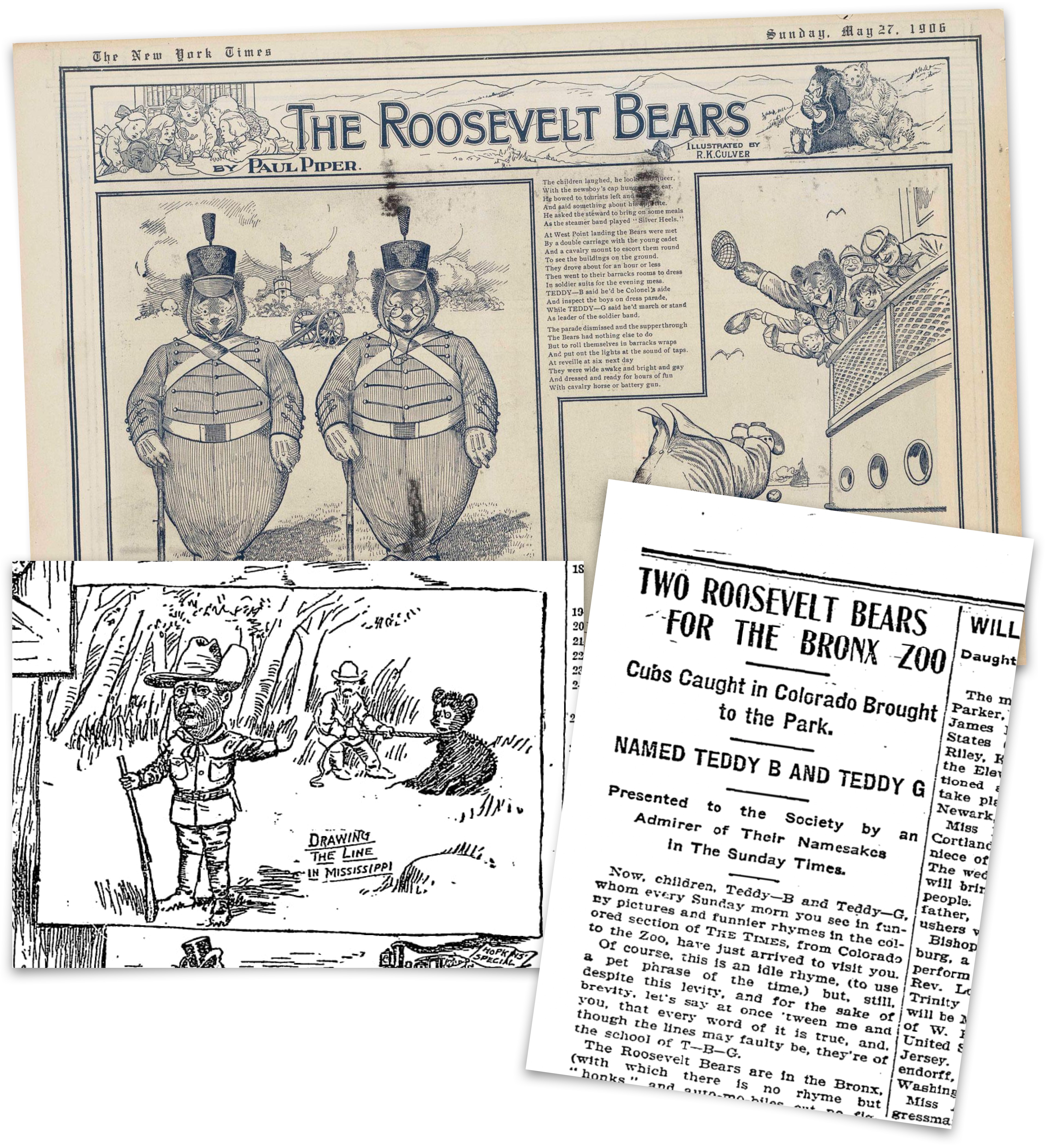
When the Bronx Zoo announced the arrival of two bears in 1906, they called them “Roosevelt Bears,” naming them Teddy B and Teddy G and triggering an obsession with bears among the children of the city. Toy dealers moved to meet the demand generated by this trend, and the name “teddy bears” stuck. The demand for teddy bears would soon sweep the country: They were to 1906 what Ferbies were to 1998 — a must have toy for every child.
Great Replacement: The teddy bear menace
The rapid rise in popularity of these new toys among children would eventually catch the ire of Rev. Michael G. Esper, who warned that teddy bears would lead to “race suicide.” In a sermon, he preached:
“Race suicide, the gravest danger which confronts this nation today, is being fostered and encouraged by the fad for supplanting the good old dolls of our childhood with the horrible monstrosity known as the ‘Teddy Bear.’”
Whereas today it is common to hear concerns about toys imposing gender norms on young girls, Rev. Esper worried that toys weren’t instilling gender norms on young girls enough. Reports of the sermon in the following days would sweep the country, going as viral as anything could in the analog age. In 1907, 108 stories ran across 27 states, passing along the sermon’s dire warning.
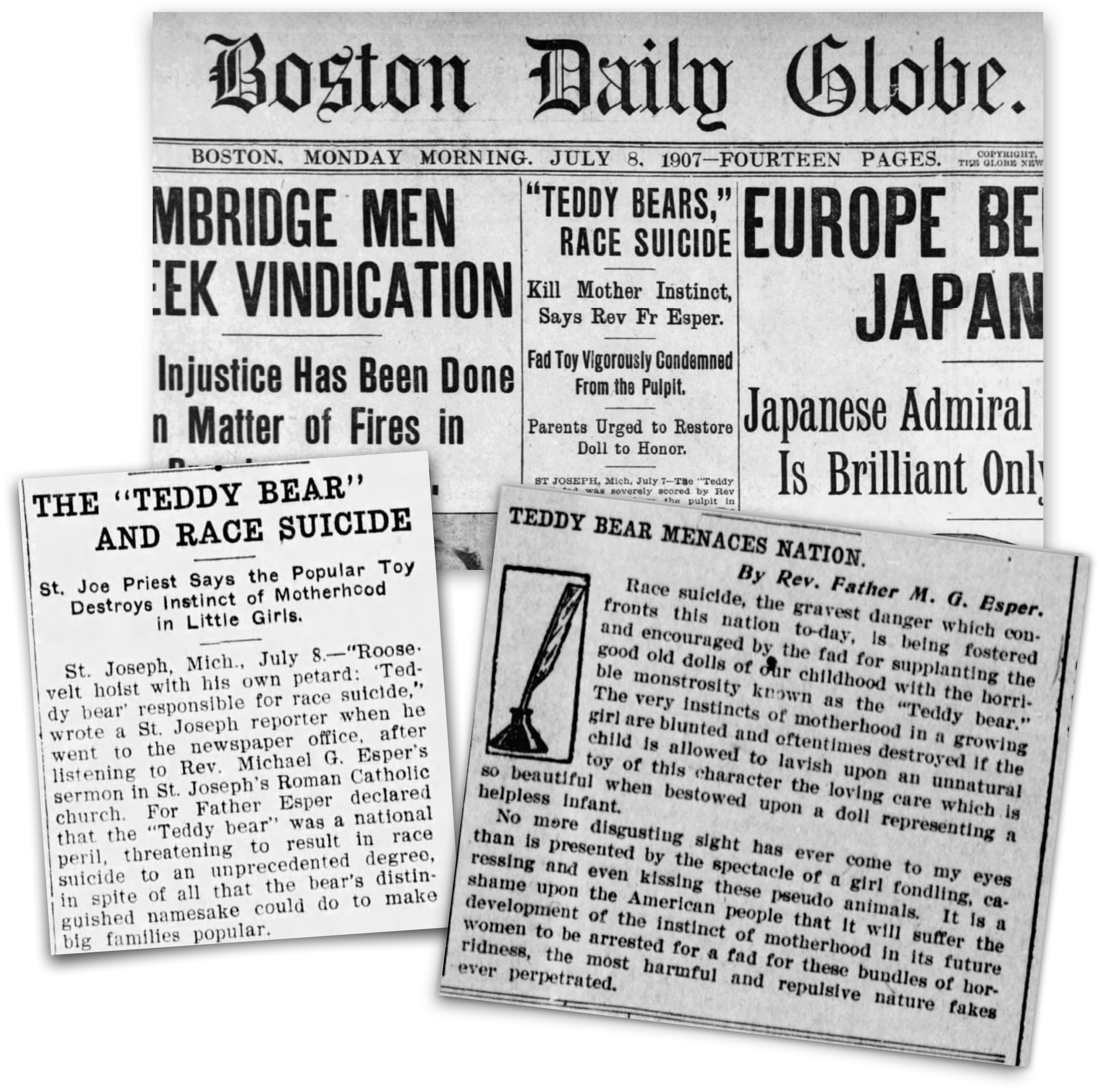
The Washington Post would report on it too — on its front page — while relegating a more positive story about a toy bear saving a child’s life to a later section of the same issue. Just like in modern times, even reputable outlets cannot resist the sensationalism of moral panic that drives traffic and readership.
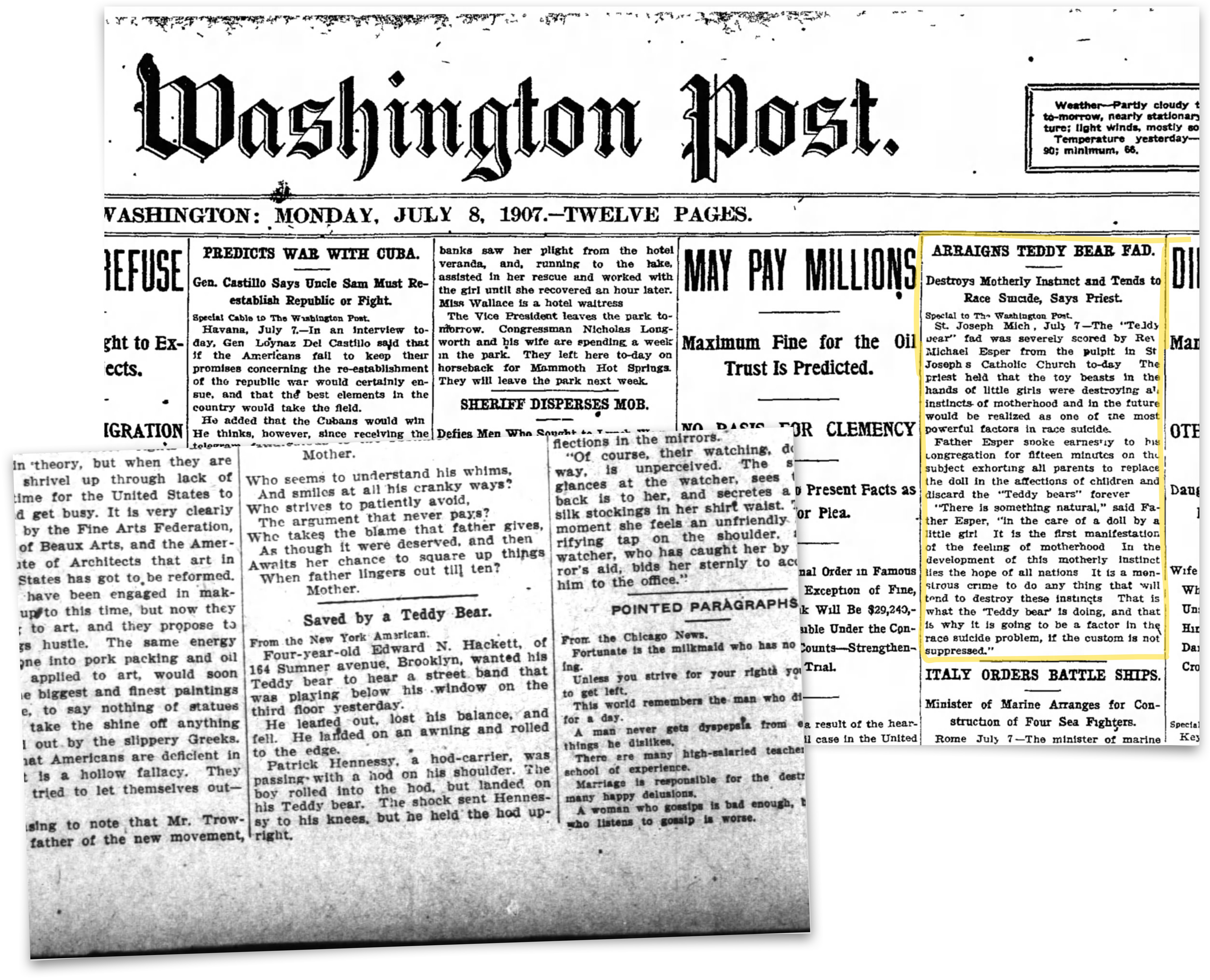
Coverage was mostly unquestioning, treating it as a legitimate concern. However, some outlets did make fun of its silliness, while others doubted the fad would even last.
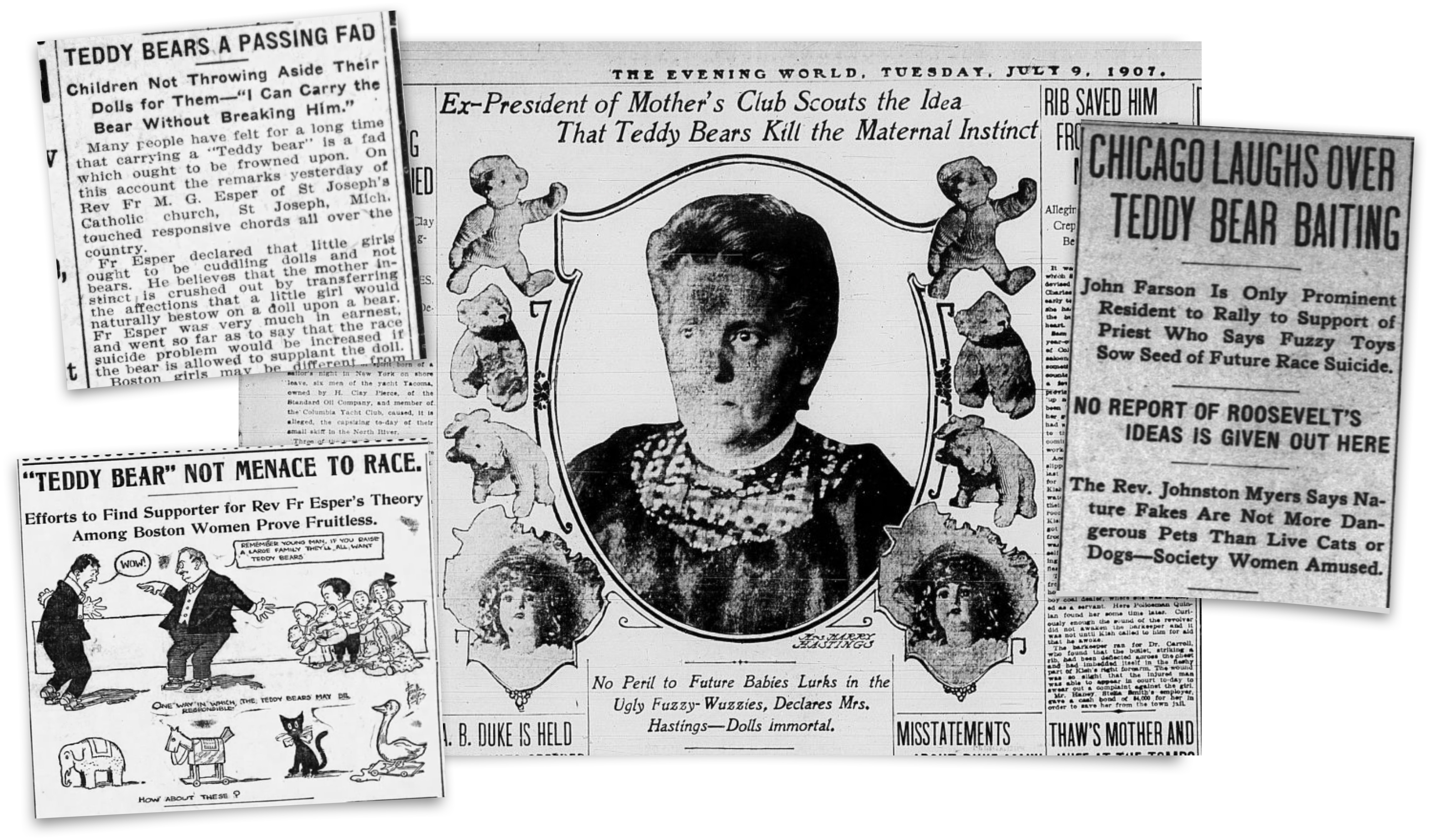
Roosevelt no doubt loved the rise of a toy with his namesake (although he despised being called “Teddy” himself). But when some people tried to cancel the teddy bear, Roosevelt made no comment. Why? Probably because “race suicide” happened to be one of his pet concerns. He saw it as one of America’s biggest threats, going so far as to say: “Willful sterility is, from the standpoint of the nation, from the standpoint of the human race, the one sin for which the penalty is national death, race death.” His mascot, popular with a whole new generation, was now being accused of the very thing he abhorred.
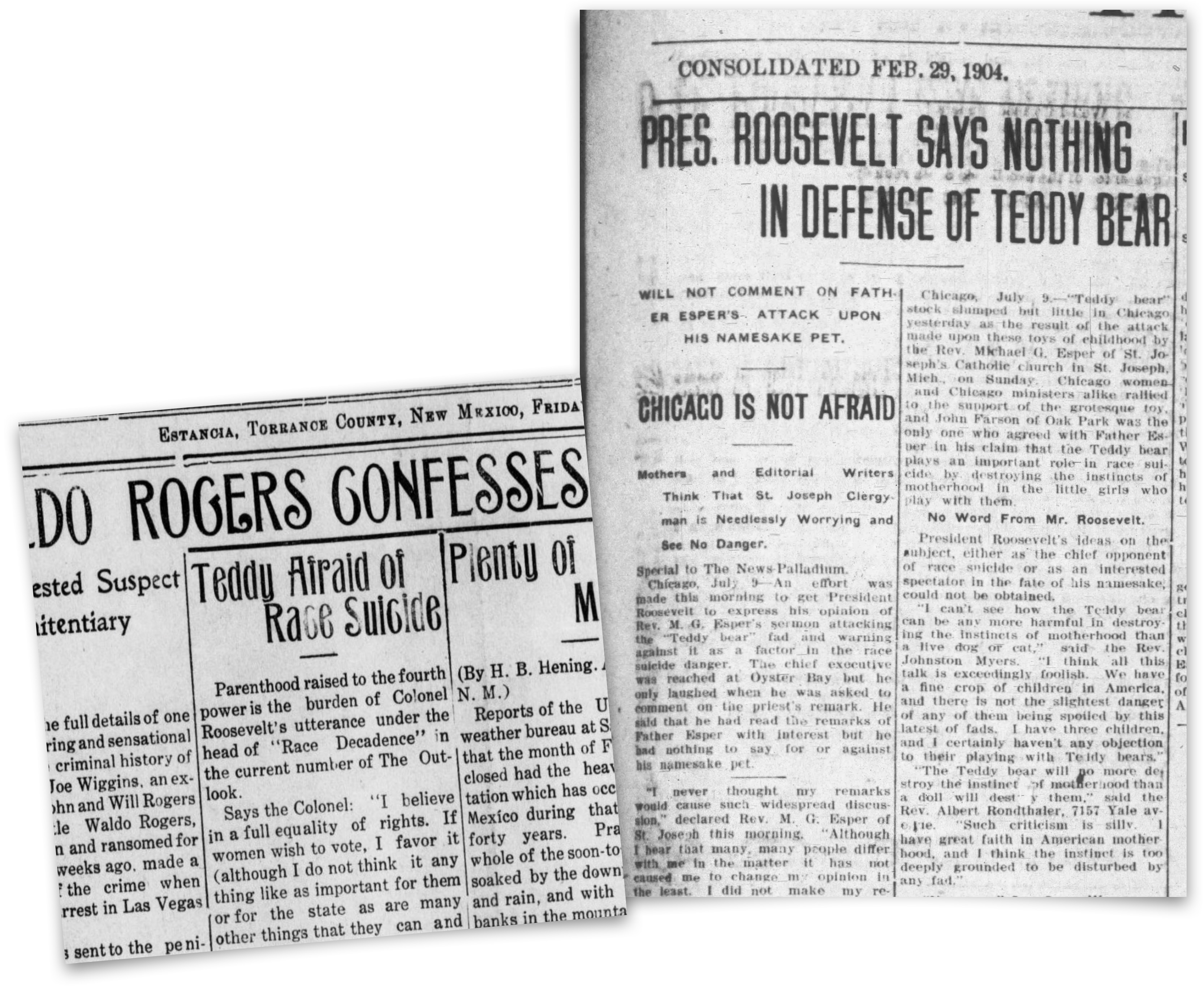
The Great Replacement theory has deep roots. It is an irresistible populist narrative: innocent objects of childhood have been weaponized into Trojan horses to serve a perverse and corrupting agenda.

